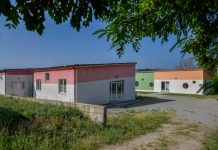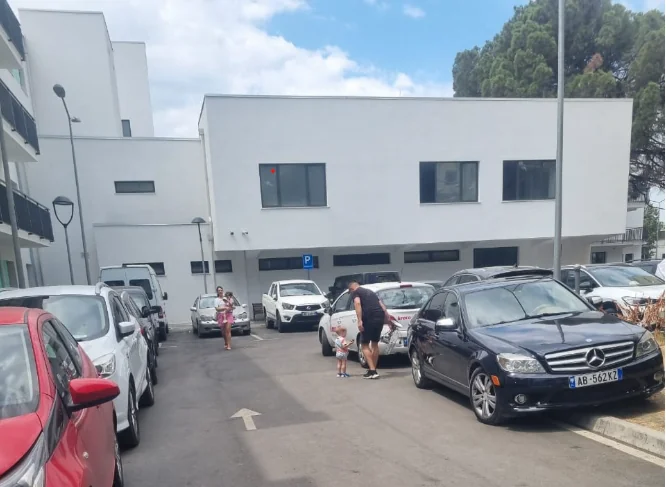
By Sebi Alla
Carrying a ventilator in one hand and his child in the other, a young father walks out of the Pediatric Hospital in Tirana on a day when temperatures soared to 37°C. Despite the building’s modern design and visible investments in both space and structure, the air conditioning system across many of the pediatric wards is only partially functional, with the exception of the Pediatric ICU and the Emergency Room.
‘We are here today to continue this mission, to expand capacity and improve services for innovative treatments and better conditions for nearly 10,000 children and families who receive care each year. In this newly opened building, the ‘Specialty Wing’, are housed key departments such as Nephrology, Pediatric Dialysis, Physiotherapy, Pulmonology, Allergology, Pediatric Surgery, and the Molecular Biology Laboratory’, said Prime Minister Edi Rama during a visit to QSUNT on February 21, accompanied by Minister of Health Albana Koçiu.
Previously, Rama had posted visuals of the Specialty Pediatrics Wing at the ‘Mother Teresa’ University Hospital Center, promising state-of-the-art facilities and quality healthcare services. But nearly five months later, air conditioning problems have surfaced in several wards of the Pediatric Hospital at QSUNT.
Rama’s promises through the years
The transformation of QSUT has been one of Prime Minister Edi Rama’s long-standing pledges, dating back to 2013. In 2015, he published a short video highlighting the government’s work and major projects, highlighting that ‘the rebirth of QSUT is one of the most difficult undertakings of the first term in office’.
Ahead of his fourth term, Rama once again brought this promise to the forefront, emphasizing that QSUT would become a regional benchmark for the entire Balkans.
Air Conditioners at the entrance…
Faktoje.al conducted an inspection across all pediatric wards and found that the air conditioning system works relatively well in the lobbies, hallways, and in doctors’ and nurses’ offices. The issue, however, lies in the patient rooms, where families of young patients are often forced to bring in fans or small portable air conditioners to maintain basic comfort. Staff themselves acknowledge that despite the buildings being new, the air conditioning is frequently problematic. Families also report the issue, frequently lingering in the corridors, while children who are able to move are brought out into the hallways, where the temperature is more bearable.
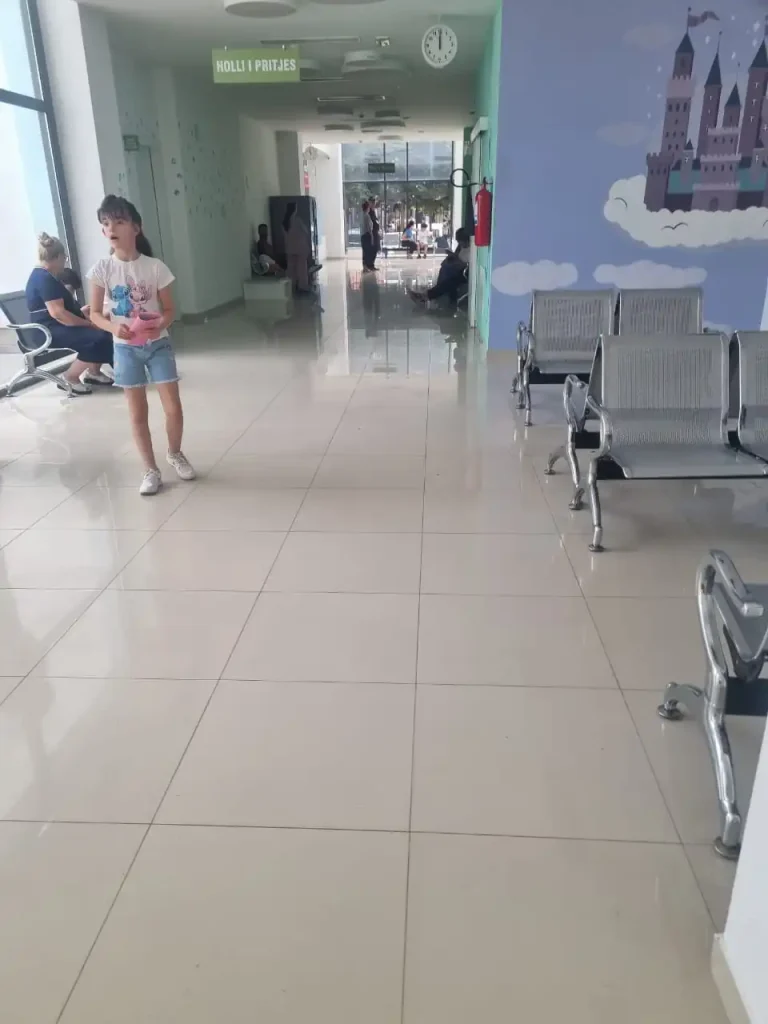
Pediatrics – Waiting Room
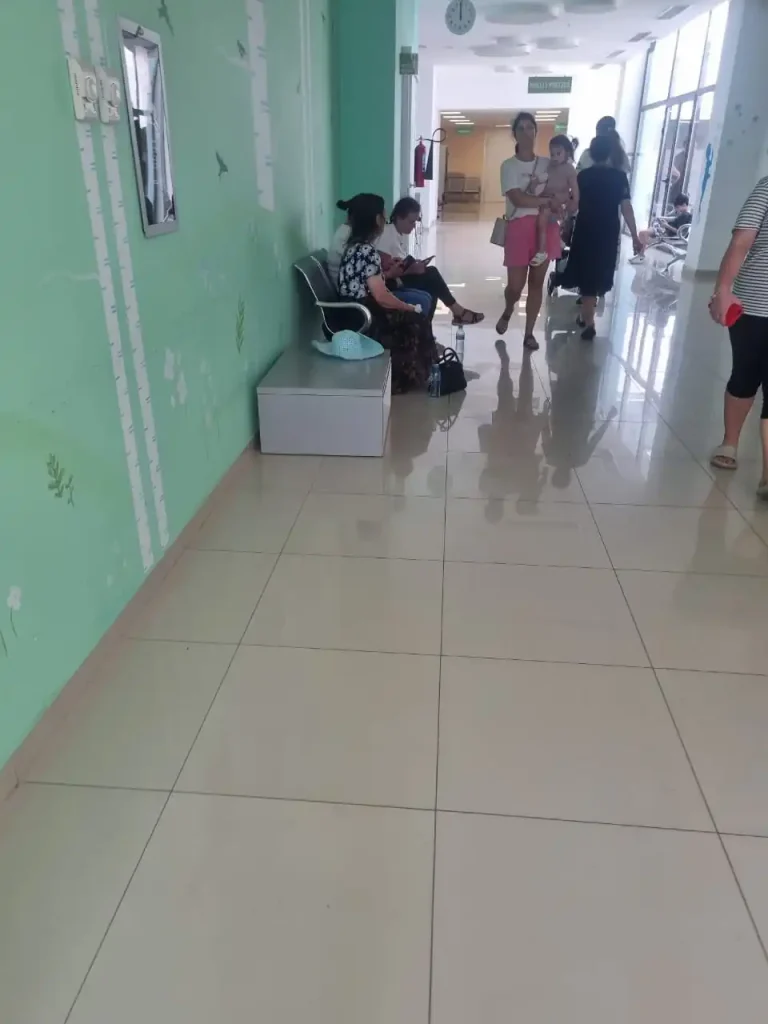
Pediatrics – Nephrology and Dialysis Unit
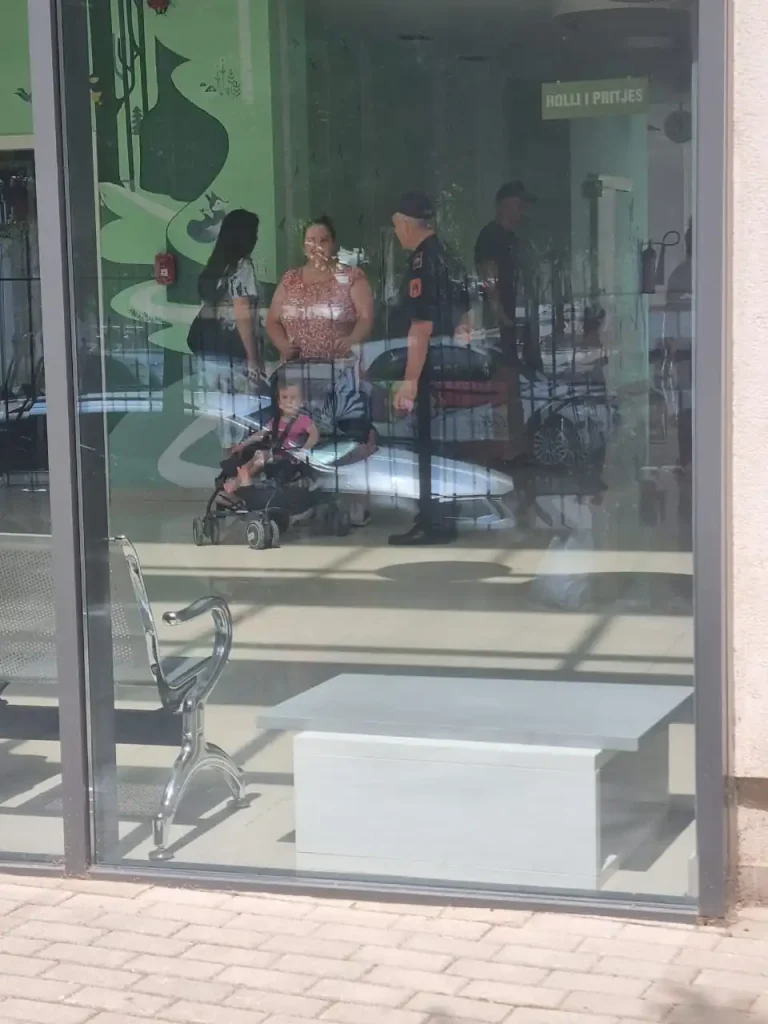
Pediatrics – Consultation Rooms
New facility, but with problems
On the first floor of the pediatric consultation wing, the air conditioning system functions relatively well, both the corridors and the rooms of specialist doctors conducting exams and consultations are equipped and operational. However, on the upper floors, several pavilions face persistent problems. In the Nephrology and Dialysis pavilion on the morning of July 8, the air conditioning system was turned off, although it is acknowledged that the system exists in the corridors and staff rooms, including doctors and nurses, but is often not switched on.
They quietly stated that the situation is a result of the electrical grid being overloaded.
Similar conditions were found in three other pavilions: Neurology, Gastroenterology, and Endocrinology.
QSUNT, in a response to Faktoje.al (after the news was published), referring to the three buildings where the pediatric service is located, states that the air conditioning system is working. ‘QSUT has 3 buildings where the Pediatric wards are housed. Each of these buildings has an independent air conditioning system’, says QSUNT. Among these buildings are the services: Imaging, Emergency, Observation, 24-hour Consultations, Operating Rooms, and Resuscitation. The cooling system uses a chiller with ceiling fan coils and is fully functional’, QSUNT stated in their reply to Faktoje.al.
9-million-euro investment
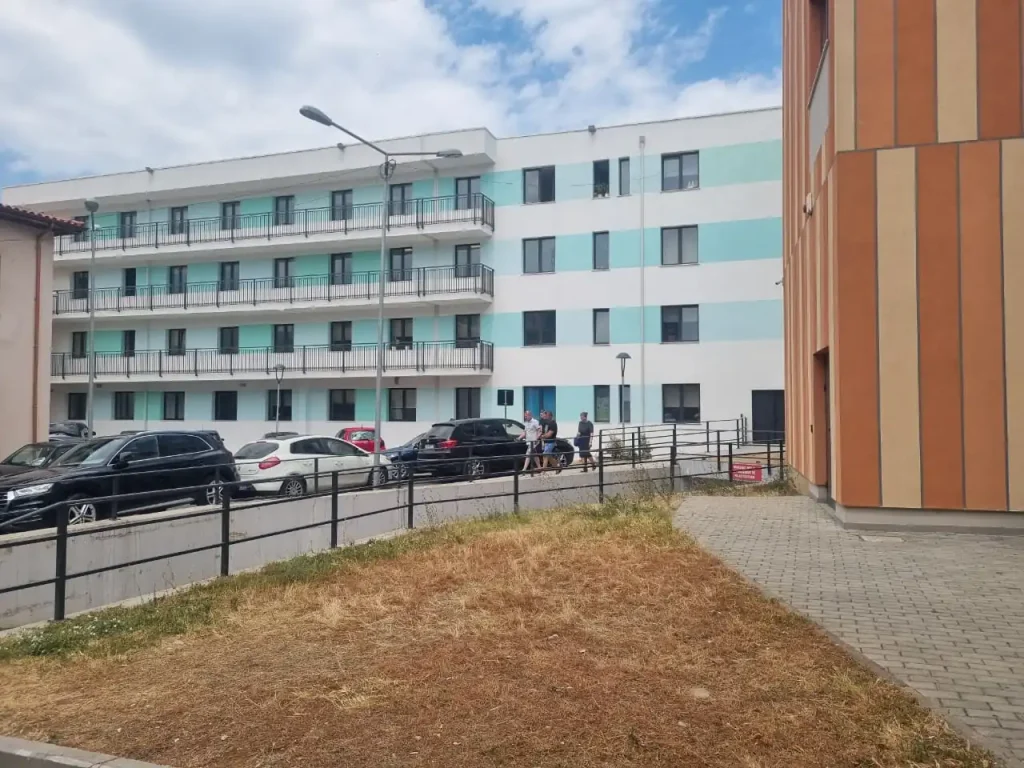
Photo from the exterior of the renovated pediatrics department
The construction of the new Pediatric Hospital at QSUNT has cost 9 million euros and includes both the new building and the partial reconstruction of the existing building (General Pediatrics). Work began in 2020, and five years later it became fully operational, serving about 130,000 patients annually from all districts, according to Ministry of Health estimates. The facility covers around 8,200 square meters and includes all wards, plus one basement level mainly used as storage. ‘This is an investment long awaited, aimed at providing the standards that doctors deserve as well as those deserved by the children treated in these services. The project involves the entire pediatric sector, including the buildings undergoing rehabilitation and the construction of the new building. It will be equipped with high-tech equipment’, said former Minister of Health, Ogerta Manastirliu, in October 2020, while the building was still under construction.
General Pediatrics
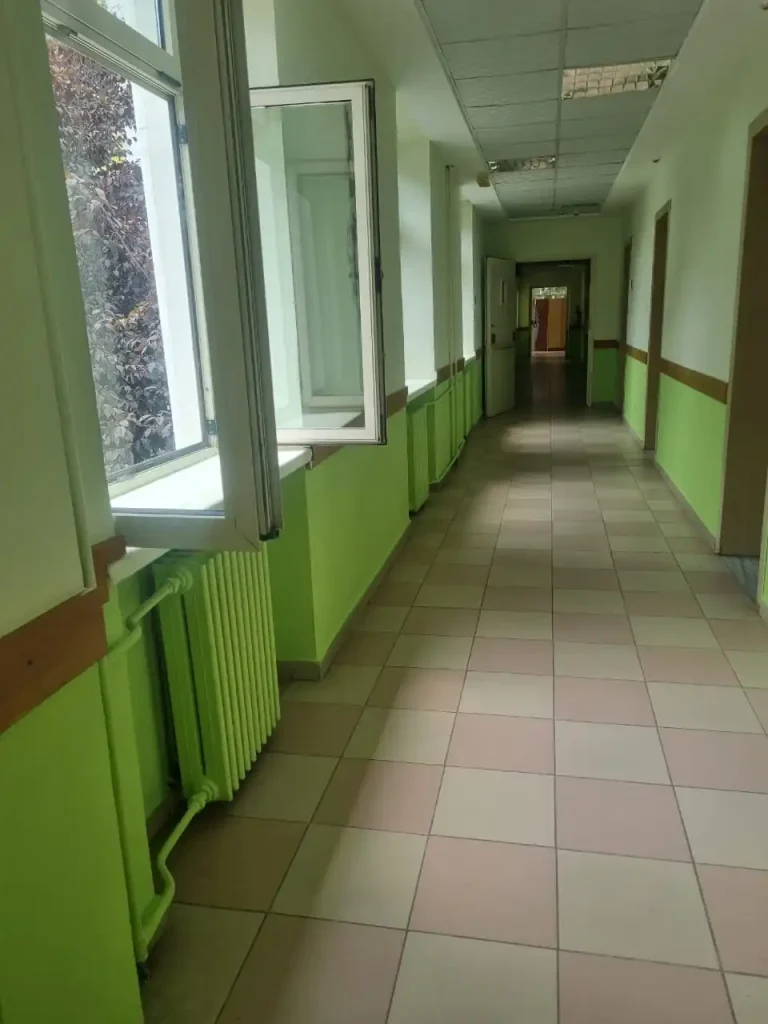
View of General Pediatrics
In the General Pediatrics building, where the Infectious Diseases and Pediatric Cardiology wards are located, the air conditioning system is completely lacking. Although the building has undergone partial renovation as part of the overall investment, the conditions are clearly not comparable to those in the new building. Prime Minister Edi Rama has promised that new investments will take place in this building within the year. ‘I am very glad that we are providing doctors and nurses in Pediatrics with the opportunity to have another facility with higher and more modern standards, and soon, with this year’s funding, we will also carry out the transformation of the third building of Infectious Pediatrics‘, Rama stated.
Response
Nonetheless, QSUNT holds a different view. While it acknowledges that the building housing the General Pediatrics service faces issues, it maintains that the cooling system is functional in the Cardiology and Infectious Diseases departments. ‘The General and Infectious Pediatrics building includes the services of Cardiology, Rheumatology, General Pediatrics, and Infectious Diseases. The cooling system consists of a chiller and ceiling fan coils. The building is old, and the cooling system is existing. Years of wear and tear have led to reduced cooling efficiency in this building. QSUT continues regular maintenance of the system. A full reconstruction of the building with modern standards is planned, and the project design phases have begun’, QSUNT states.
Although it admits the building is worn and has an outdated cooling system, when specifically asked about General Pediatrics, where Faktoje.al observed serious air conditioning problems, QSUNT’s position contradicts itself. ‘In General Pediatrics, the air conditioning system with a chiller is functional. To increase the cooling system’s efficiency, QSUT has added an additional chiller and air conditioners in the consultation rooms’, QSUNT concludes.
Conclusion
The healthcare staff rooms and patient rooms, along with the beds, are new; however, from the very first months after inauguration, the air conditioning system has been an issue. Pediatric staff have unofficially been informed that in some cases the electrical network cannot handle the load, forcing them to repeatedly turn off the air conditioning units, while in other wards there is no such system at all. Therefore, Faktoje.al considers Prime Minister Edi Rama’s statement to be only partially true regarding the conditions found at the Pediatric Hospital.
This article was prepared with support from the Friedrich Ebert Foundation in Tirana.




